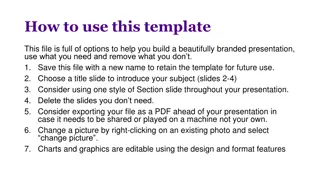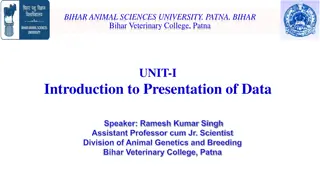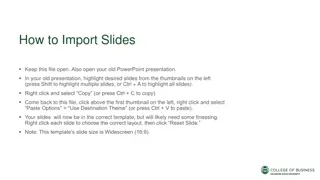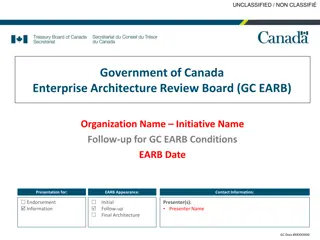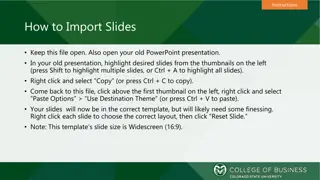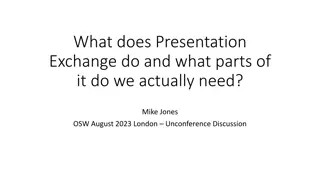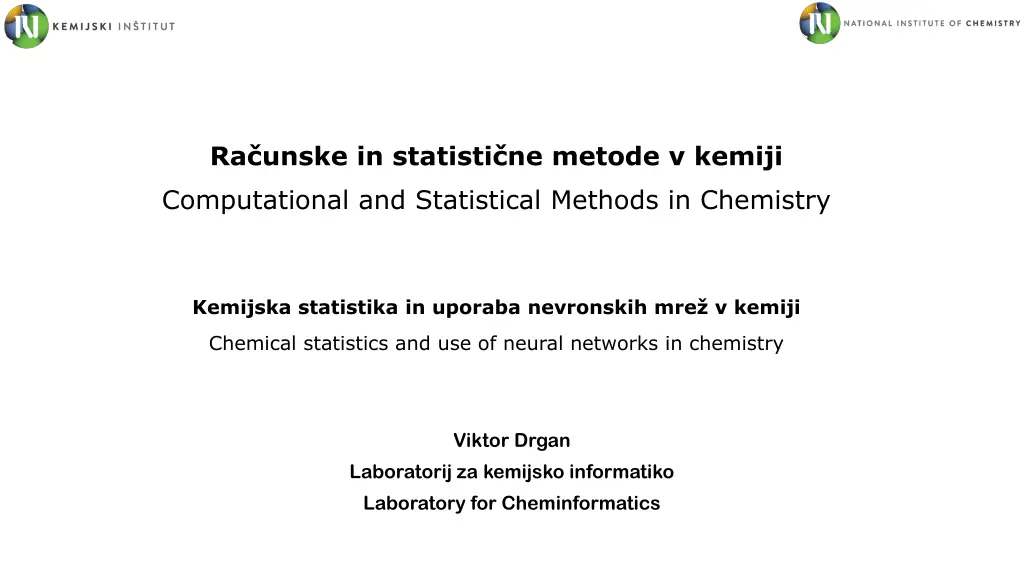
Computational and Statistical Methods in Chemistry with Neural Networks
Explore the use of computational and statistical methods in chemistry, focusing on neural networks. Learn about artificial neural network basics, data preparation, model building, predictions, grouping objects, and more. Discover tools like CPANN and Molecular Modeling in software like Discovery Studio and Pipeline Pilot. Dive into Kohonen and Counter-Propagation Artificial Neural Networks for your chemistry projects.
Download Presentation

Please find below an Image/Link to download the presentation.
The content on the website is provided AS IS for your information and personal use only. It may not be sold, licensed, or shared on other websites without obtaining consent from the author. If you encounter any issues during the download, it is possible that the publisher has removed the file from their server.
You are allowed to download the files provided on this website for personal or commercial use, subject to the condition that they are used lawfully. All files are the property of their respective owners.
The content on the website is provided AS IS for your information and personal use only. It may not be sold, licensed, or shared on other websites without obtaining consent from the author.
E N D
Presentation Transcript
Raunske in statistine metode v kemiji Computational and Statistical Methods in Chemistry Kemijska statistika in uporaba nevronskih mre v kemiji Chemical statistics and use of neural networks in chemistry Viktor Drgan Laboratorij za kemijsko informatiko Laboratory for Cheminformatics
Kemijska statistika in uporaba nevronskih mre v kemiji Predstavljene bodo teoreti ne osnove umetnih nevronskih mre , ki jih bomo uporabili v nadaljevanju sklopa. Seznanili https://doi.org/10.1186/s13321-017-0218-y) protito nih umetnih Predstavljena bo novej a razli ica programa. Pogledali si bomo kako opisati objekte (molekulske strukture) in pripraviti vhodne podatke za program, zgraditi model iz teh podatkov in kako s pomo jo programa dobiti napovedi in prikazati grupiranje objektov. se bomo z uporabo programa CPANNatNIC gradnjo vizualizacijo ( lanek: modelov rezultatov. za nevronskih mre in Seznanili se bomo z orodji molekulskega modeliranja, ki so na voljo v programski opremi Discovery Studio in Pipeline Pilot , s poudarkom na molekulskem sidranju v programu CDOCKER (priprava atomske strukture biomolekularnega sistema, vrednotenje nastavitve za molekulsko sidranje redocking oz. ligand reproduction , molekulsko sidranje ter vizualizacija in analiza rezultatov sidranja). priprava knji nic ligandov za
Kohonen and counter Kohonen and counter- -propagation artificial neural networks propagation artificial neural networks x1 x2 x3 x4 x5 x6 x7 W1,1,1 W1,1,2 W1,1,3 W1,1,4 W1,1,5 W1,1,6 W1,1,7 R1 iterations y1 iterations R2 y2 R3 y3 Figure (modified) from https://jcheminf.biomedcentral.com/articles/10.1186/s13321-017-0218-y (CCBY)
Input file COMMENT 16 OBJECTS, 6 VARIABLES VARIABLE NAMES 1 INDEPENDENT VARIABLES, 0 TARGETS DATASET VALUES See template at: /home/kemijski/Documents/CPANN/examples/input_template.xlsx
Model weights file structure 9x9 neurons, 11 variables, neighboorhod function 2 , 0-non-toroid, 1-normalization factors included Variables/names 1 - descriptors, 0 - targets Normalization factors (average, st. dev.) Model weights (one line=>one neuron)
File with SMILES (for visualization of molecules) ID number of the object , space , SMILES , space ; additional text The text for additional information may contain some HTML constructs to get multiline or tabular format of the text. If there are multiple entries for the same ID, the last entry will be used.
Optimization options RMSE: Root-mean-square error MCC: Matthews correlation coefficient Actual class active inactive Predicted class active TP FP inactive FN TN
Results: text area ID number of the compound Position of the excited neuron Predicted value Euclidean distance Experimental value RMSE & R List of compounds that excited a neuron top-map (classes) top-map (IDs)
Examples: CPANNatNIC program available in folder: /home/kemijski/Documents/CPANN Example datasets available in folder: /home/kemijski/Documents/CPANN/examples BCF bio-concentration factor dataset RT Fish toxicity ( Rainbow trout ) dataset
Examples: Examples: Check input files Use available models and input files to get predictions/top-maps Normalize descriptor data before performing predictions if necessary (BCF dataset) Generate new input file(s) for classification with 2 classes using available datasets and perform optimization


